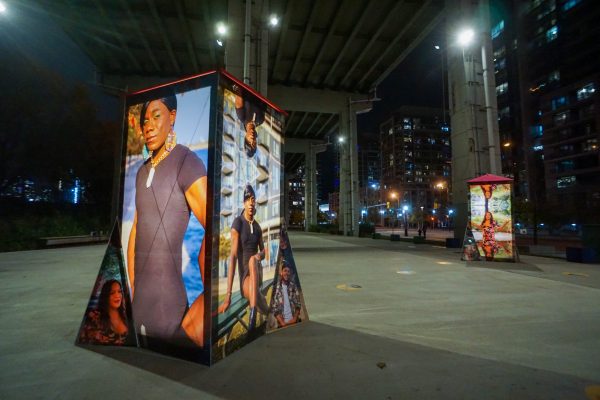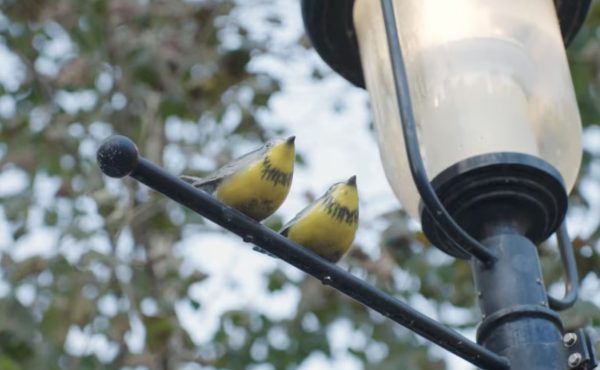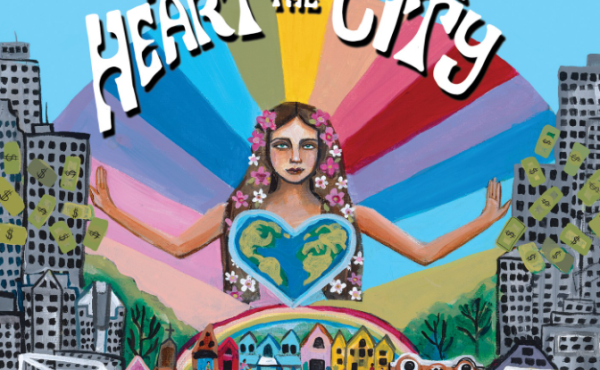The publication of the city’s 10-year public art strategy accompanied an announcement that 2021 would be Toronto’s Year of Public Art. Of course, when this initiative was first set forth, no one could have foreseen how a global pandemic would drastically transform our world and the way we live. Given the nature of the pandemic, and the way it has changed our relationship to public space, there couldn’t be a more fraught or fascinating year for public art. Indeed, the goal of public art (bringing people together in public space) seems antithetical to the cadence of daily safety precautions directing us to stay at home and remain apart.
In light of these restrictions, public art has been forced to transform its usual objective and mode of presentation. The Bentway has been at the forefront of this reimagining of public art in the age of the coronavirus pandemic.
“I think there was a time when public art was very associated with monuments and monumentality, and I like to think that time has come and gone,” said Sarah Munro, senior manager of programming at the Bentway. “There was a moment when we really defined success in public art in terms of bums in seats or people in a space, where it was a matter of scale and spectacle, and how many people you could entice down to a location. Obviously, none of those models is a model for this moment. I think people are in need of these cultural outlets, but the way they are engaging with art is much more personal. As we are thinking about programming, we are turning to the kind of large-scale projection work that lots of people can see, but can see from their homes, or a dance piece that you can see on zoom and then have a conversation about afterwards.”
In an interesting turn of events, then, the hyper-personal is made possible by the hyper-public, where large-scale projections that many people can see from afar are favoured over works that necessitate physical closeness. The Bentway’s 2020 fall project, The Essentials, an exhibition in partnership with the City of Toronto’s BigArtTO campaign, was a good example. One of the pieces commissioned for that exhibition, Erika DeFreitas’ work, composition for an elegy to what once was and all that remains; or, a score for the past, the present, the future tenses, consisted of fragmented images of Toronto architecture projected onto the silos of the Canadian Malting Co. This highly tactile work reimagined the possibility of touch through a purely visual sensation. Indeed, the visual layering of different materials and depths reinvigorated an awareness of tactility at a time when touch is prohibited.
Other projects undertaken at the Bentway have reflected more explicitly on themes relating to public space and COVID-19, such as the Bentway’s Safe in Public Space program, an initiative that explored how we define safety in public spaces. Syrus Marcus Ware’s multi-media installation and digital exhibition Radical Love, for example, highlighted the experience of Black and Afro-Indigenous, Trans and non-binary individuals and their own conceptions of safety in public spaces.
As the Bentway’s 2020 Public Space Fellows, both Gelila Mekonnen, an urban planner, and Nahomi Amberber, a public health researcher, explored the intersections between public health and public space. “The safe in public space initiative fundamentally look[ed] towards broadening the definition of what it means to be safe in public space. It grappl[ed] with the realities of the different people who exist in our cities,” said Mekonnen. “Public health is concerned with health and well-being, and urban planning in relation to public space is really concerned with how we live. For me, those are two sides of the same coin,” added Amberber. “Both public health and urban planning are concerned with how people interact with the built environment, so I think these two things have always been interconnected.”
The rest of 2021 remains uncertain. The hope sparked by the vaccine has been tempered by the proliferation of new COVID-19 variants and Canada’s comparatively slow progress in distributing vaccinations. Just as the Bentway transformed its programming to respond to the practical and thematic issues posed by the pandemic, so too will the City of Toronto’s ‘Year of Public Art’ have to pivot based on these changing conditions. I’m curious to see what comes next.
photo by Ravyn Wngz
Sarah Ratzlaff is Spacing’s public art critic. Follow her on twitter at @ratzlaff_sarah.




